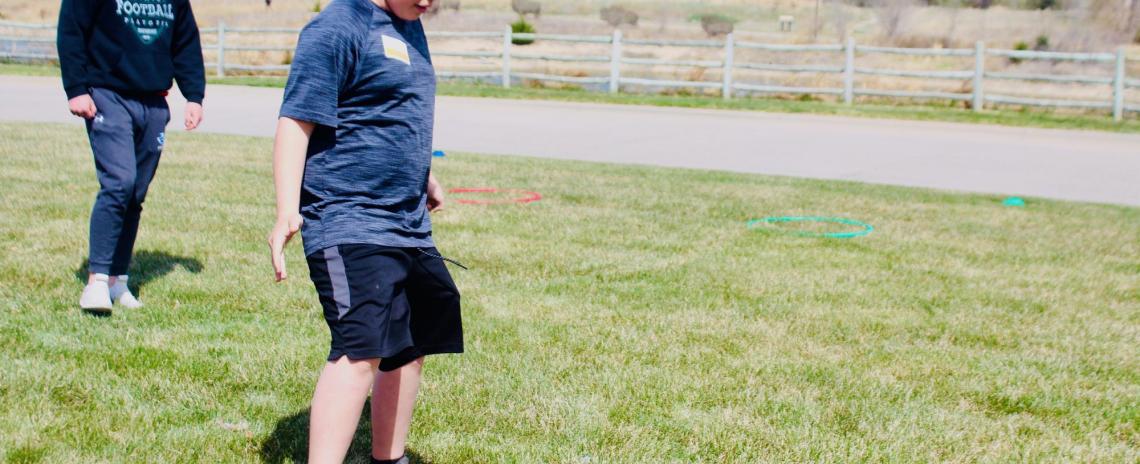Seventeen Years Strong: Central Nebraska's Youth First Conference is a joy to behold
Seventeen Years Strong: Central Nebraska's Youth First Conference is a joy to behold
By Tyler Dahlgren
Trent Landreth brought a mythical creature to life with several fail swoops of a drawing marker as his audience marveled in delight.
It was an elephant-cheetah hybrid, concocted on-the-spot and in the imagination of someone among the crowd. When the illustrator-turned-social media sensation put the final remarkable touch on his picture, the Archway Museum Event Center echoed with oohs and ahhs.
Not only had the artist behind Drawings by Trent captivated everyone in attendance, but he’d kicked off the 17th annual Youth First Conference as well as anybody possibly could have. Trent was diagnosed with Level 3 Autism at an early age, and his famous illustrations have garnered and inspired more than 2.6 million social media followers.
He’d made magic. Fittingly, that’s what this event geared towards transition-aged students with developmental disabilities has done for 17 years.

“We’re from Kansas, and I don’t know that we’ve seen anything like this before,” said Trent’s dad Corey Landreth. “It was really amazing to see so many students and educators coming from so many different places to be together.”
Landreth, who presented the keynote alongside Trent’s sister Tristen, got that right. The conference is one-of-a-kind, bringing together nearly 100 students from Central Nebraska, as far north as the South Dakota border and as far south as the Kansas/Nebraska line. It’s sponsored by the Nebraska Central Region Transition Grant, and has historically been held by ESU 11, since former transition coordinator Rita Stiles dreamt it into existence two decades ago.
“Truthfully, it’s a team approach,” said ESU 11 transition coordinator Jamie Love. “In the past, it’s been mostly ESU 11, but this year we’ve had a lot of really awesome support. ESUs 9,10,11 and 17 were all involved in making it happen.”

The conference is designed specifically for students with complex needs. There were two rounds of breakout sessions centered around employment, independent living, transportation and community safety.
“We really feel like this is a population that deserves a conference strictly for them,” said ESU 11 special education director Lona Nelson. “Each of the breakout sessions allow them to look at tasks and grow skills related to post-secondary needs.”
To maximize the experience, conference organizers spin a wide web of partnerships, bringing in the Nebraska State Patrol, the Minden Police Department, the Kearney Fire Department and the Nebraska Safety Center, just to name a few, to hold interactive demonstrations with conference-goers.

“It gives these students an experience to help them get out of their comfort zone a little bit and to learn about what’s out there as far as possibilities for themselves,” said ESU 11 transition coordinator JoAnn Felix. “It shows them that even though they have a significant disability, they can be successful and they are important. The activities we offer give them knowledge they can take forward with them from this day on.”
UNK students from the College of Education are on hand throughout the day, running the Adaptive P.E. station and helping out however they can. It's a great hands-on experience for the college students, said Love, and an invaluable opportunity to interact with students who have significant needs.

“The most important thing that everybody should know is that students with disabilities grow up to be adults with disabilities who have every right to be successful and involved in their community, just like every other person,” said ESU 10 transition coordinator and central region transition facilitator Blair Hartman. “Knowing how to expose them to opportunities, and then offering them opportunities as they enter their adult life, is the most important thing we can do.”

The conference also gives educators the chance to collaborate with a shared experience as the foundation.
“The collaboration among teachers is so important,” said Hartman. “There may be one student with significant needs in a rural district, so trying to develop programming that is excellent for the student can be challenging.”
We’re always the most comfortable surrounded by peers who understand us, Landreth explained. When the guard’s down, growth can really happen.
“I know, at least for Trent, that he’s in a world he doesn’t fit into most of the time,” he continued. “So to have him in places where he feels comfortable and other people understand him and get him is just really cool. When students can get together and learn and not have to worry about what anybody else is going to think, it’s amazing to see them engage.”

The relationships, Nelson believes, are what truly make the Youth First Conference so special. Many of the students are repeat-attendees. There’s a welcoming sense of familiarity.
“They see each other every year, and they have genuine friendships,” Nelson said of students from all of the different schools interacting. “That’s the best part to see, when they make that connection and they’re like ‘Hey, I know you. I remember you.’ Then they gravitate towards one another.”
The day incites a never-ending string of smiles, and it’s quite heartwarming.

“Students with higher needs deserve the opportunity to interact with students away from their district,” said Nelson. “They need genuine opportunities to learn and deserve to have high expectations. We need to keep giving them those chances.”
In this environment, it’s amazing what the kids can accomplish, even in the span of a single day. Ultimately, that’s the message Love and the team behind the Youth First Conference aim to relay each April.
“You have value,” Love said. “You may have some limitations, but you can do awesome stuff.”



